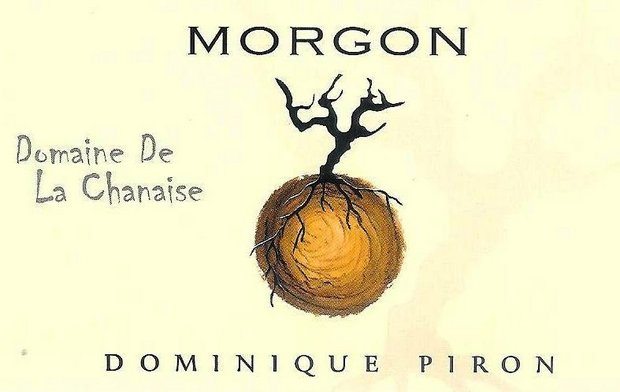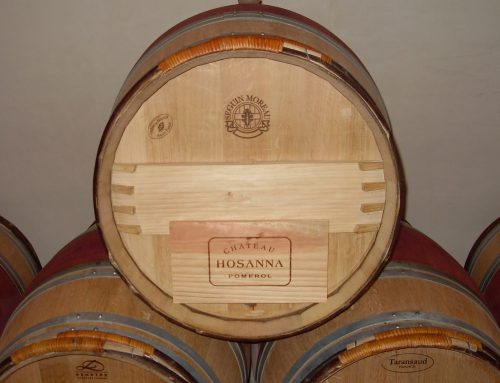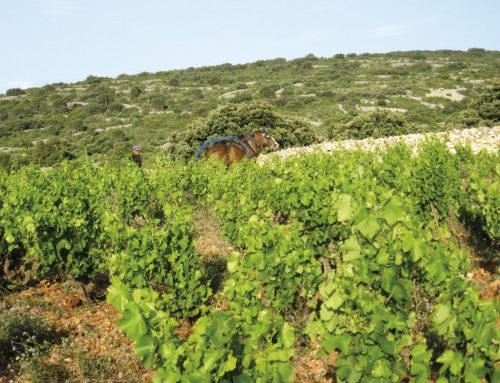Beaujolais is assigned to Burgundy, even though part of it is in the Rhone. Its red wine is made from the gamay grape, which is not grown in the Rhone, nor in any other part of Burgundy, where pinot noir rules. And its most famous wine is the watery, 6-week-old Beaujolais Nouveau, which arrives the third week of November, is forgotten by January, and damages Beaujolais’ reputation year-around. Fortunately, some young winemakers and a few of their elders are making Beaujolais more Burgundian.
Traditional Beaujolais is made by carbonic maceration, a process of pumping carbon dioxide into enclosed vats or tanks with whole gamay grapes. The carbon dioxide penetrates the grape’s skin starting fermentation in each berry. The result is a very fruity, light-bodied wine ready for drinking. Beaujolais Nouveau is the extreme example of this method.
Dominique Piron, 63, is the 14th generation winemaker at the family estate,Domaine de la Chanaise. With his American wife, enologist Kristine Mary, Piron makes his Beaujolais using the classical Burgundian method of crushing the grapes and using the natural yeasts on the grapes’ skins to start the alcoholic fermentation. The skins remain in contact with the juice adding color, tannins, and phenolic flavors.
Taste the 2011 Domaine de la Chanaise Beaujolais-Villages. The Pirons offer you a pungent aromatic and richly flavored wine. Strawberry and red plum scents and flavors capture your attention, and the fuller body and good acidity mark the 2011 Domaine de la Chanaise Beaujolais-Villages as a wine that stands above its classification and expectations.
My introduction to Piron Beaujolais was happenstance. I was in a wine shop and saw the 2010 Domaine Piron-Lameloise Chenas Quartz on sale. Like you, the word sale makes me stop and look. Add a lifetime love of Beaujolais, and you get another word: purchase.
Chenas is classified a Cru Beaujolais. There are 10 villages or areas in Beaujolais permitted to use their names on the label. Chenas is the smallest cru and has the structure for aging a decade or more in a great vintage — things most consumers are unaware of because of Beaujolais Nouveau.
Ten years ago, Piron purchased a Chenas vineyard from the Lameloise family, owners of the renowned Burgundy three-star Michelin restaurant of the same name. Piron added the word quartz, reflecting the significant amount of that mineral in the vineyard.
The 2010 Domaine Piron-Lameloise Chenas Quartz lives up to its name with a striking mineral, stony backbone to the very tasty raspberry and black cherry flavors. While enjoyable now, it will deliver greater pleasure with another two years of cellaring.
Morgon is one of the two most structured Cru Beaujolais (the other is Moulin-a-Vent). Piron’s Morgon vineyard has been in the family since 1590. From it came the 2010 Domaine de la Chanaise Morgon bursting with rose hip, cedar and red fruit aromas. Its delicious cherry, strawberry and mild spice flavors are carried on a medium body, framed with tannins and acidity that guarantees a decade of evolving complexity.
Some younger winemakers are trying to correct Beaujolais’ imagine by employing winemaking techniques that produce oak-influenced, blackish-colored, high alcohol wines. But those wines are masking gamay’s pleasures. Better they emulate Piron’s style. From basic Beaujolais-Villages to Cru Beaujolais, Prion captures gamay’s enticing fruit aromas and flavors and delivers them with finesse and elegance.
Expect to pay about $16 for the 2011 Beaujolais-Villages; $19 for the 2010 Morgon; and $24 for the 2010 Piron-Lameloise Chenas Quartz.








Leave A Comment